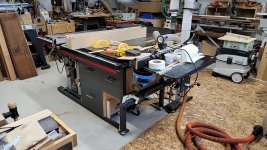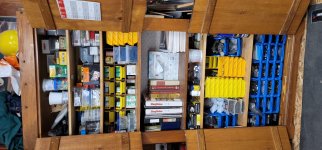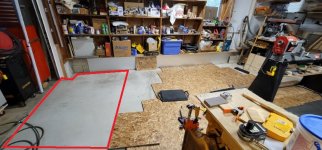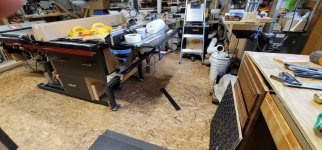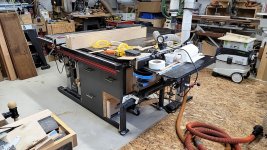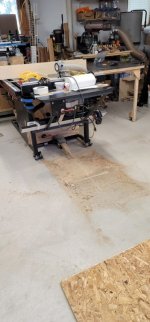squall_line
Member
Michael Kellough said:“ Dricore rates their standard subfloor product at supporting 6642 pounds per square foot”
Pretty sure they find this by neatly stacking bricks or bags of sand on a panel until the plastic substrate collapses. Then they divide the total weight by 4 to get the “square foot” capacity.
But cars, horses, and machine tools don’t have square feet let alone 12”x12” square feet. You really want to know the point load capacity, basically the puncture resistance of the panel.
A 500# machine sitting on four leveling feet will be applying about 125# on each of four particular square inches. 12”x12”=144@125#per=18,000#. You could put something under the feet to spread the load but what about when you’re rolling the machine on casters?
We don’t really know from that 6642#square foot rating how it would fair under a small hard wheel under a heavy machine but since Martin fielder says it works with the very heavy machines in his shop... [cool]
At my former job, we had a mezzanine where we stored paperwork, but we also had a pallet jack that we wheeled things around with. The concrete floor was rated at 125 lb/sq ft or something. I asked how I was able to walk up there at that load rating, and I got a speech about static loads vs. impact loads and overall loads vs. point loads. I was then told to just weigh the boxes and make sure any given pallet didn't exceed the rating.

